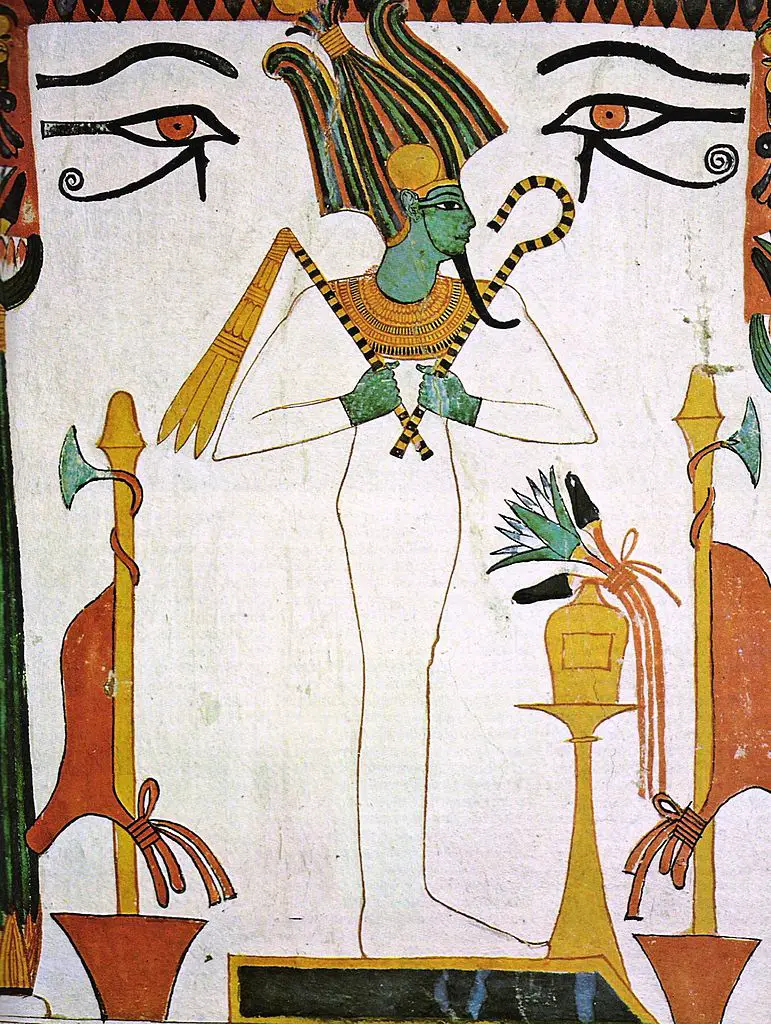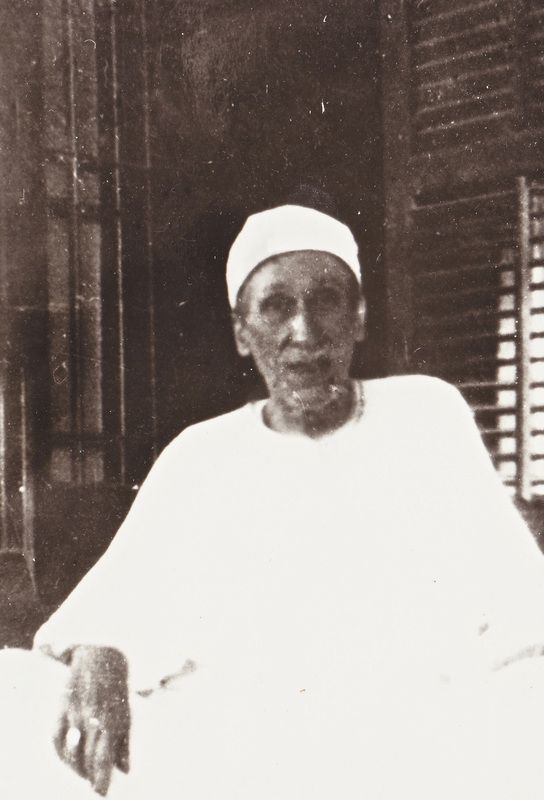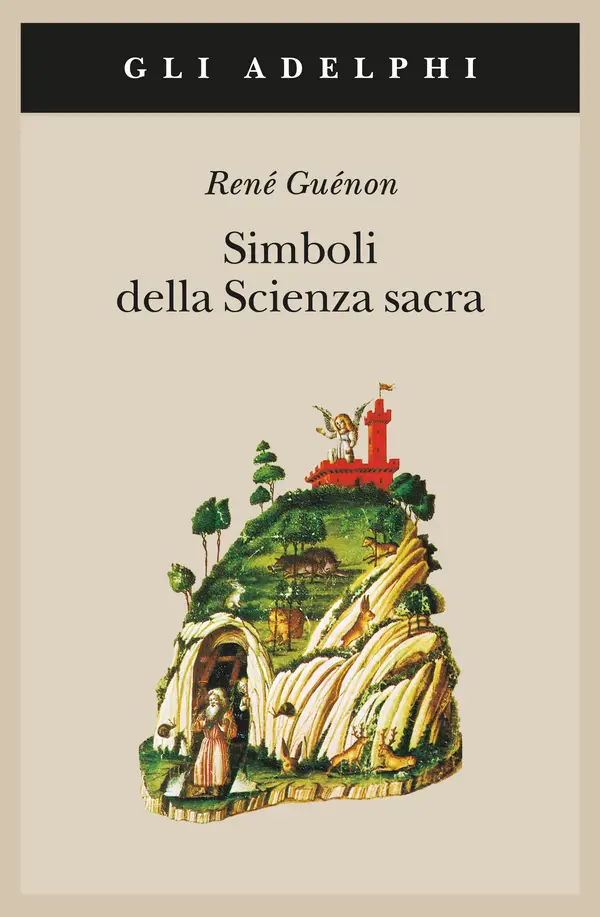On November 15, 1886, the esotericist René Guénon was born in Blois, France. As a tribute to him, we propose the reading of an excerpt from his work, published posthumously, "Symbols of Sacred Science", which deals with the theme of the primordial fragmentation of the Universal Man (Purusha, Prajāpati, Osiris, Adam Qadmon) and of its final reintegration into its original state.
di René Guénon
Taken from "Symbols of Sacred Science"
In one of our works we have mentioned [1] about the Ming-tang and Hold-ti-Huei, a Masonic formula according to which the task of the Masters consists in "to spread the light and gather what is scattered". In fact, the juxtaposition we were making then concerned only the first part of the formula [2]; as for the second, which may seem more enigmatic, since it has very notable connections in traditional symbolism, it seems interesting to us on this point to provide some indications that could not have found a place on that occasion.
In order to understand the matter as completely as possible, it is convenient first of all to refer to the vêdic tradition, which is more explicit than others in this regard: according to it, in fact, "That which is scattered" are the limbs of the purusha primordial which was divided into the first sacrifice performed by Deva at the beginning of time, and from which, thanks to this division, all manifested beings were born [3].

It is evident that this is a symbolic description of the passage from unity to multiplicity, without which there could actually be no manifestation; and thus one can already realize that the "reunion of that which is scattered", or the reconstitution of the purusha what it was "before the beginning", if it is allowed to express itself thus, that is, in the non-manifested state, it is nothing other than the return to principial unity. purusha is identical to Prajâpati, the "Lord of produced beings", the latter being all derived from him and consequently considered almost as his "progeny" [4]; and also Vishwakarma, that is, the "Great Architect of the Universe", and, in so far Vishwakarma, it is he who makes the sacrifice while at the same time being its victim [5]; and, if it is said that he is sacrificed by Deva, this does not really make any difference, since i Deva they are ultimately nothing other than the "powers" that he carries within himself [6].
We have already said on several occasions that every ritual sacrifice must be considered an image of this first cosmogonic sacrifice; and always in every sacrifice, as he pointed out Coomaraswamy, «The victim, as i Brahmana, is a representation of the sacrificer, or, as the lyrics say, è the sacrificer himself; in accordance with the universal law according to which initiation (diksha) is a death and a rebirth, it is evident that the "initiate is the oblation" (Taittiriya Samhita, VI, 1, 4, 5), "The victim is essentially the sacrificer himself" (Aitarêya Brâhmana, II, 11) " [7].
This brings us directly back to the Masonic symbolism of the degree of Master, in which the initiate effectively identifies himself with the victim; on the other hand, there has often been an insistence on the relationship between the legend of Hiram and the myth of Osiris so that, when it comes to "reuniting what is scattered", one can immediately think of Isis reuniting the scattered limbs of Osiris; but basically the dispersion of the limbs of Osiris is exactly identical to that of the limbs of purusha or Prajâpati: they are only, one might say, two versions of the description of the same cosmogonic process in two different traditional forms.

It is true that in the case of Osiris and Hiram it is no longer a question of a sacrifice, at least explicitly, but of a murder; but this essentially changes nothing, since it is the same thing considered under two complementary aspects, as a sacrifice under the "devic" aspect and as murder under the "asuric" aspect [8]; we are content to point out this point in passing, because we could not insist on it without going into arguments that are too detailed and extraneous to the problem we are now dealing with.
Always the same way, in the Jewish Kabbalah, although we no longer speak properly of either sacrifice or murder, but rather of a kind of "disintegration" whose consequences are the same, it is from fragmentation of the body of theAdam Qadmon that the Universe was formed with all the beings it contains, so that the latter are almost particles of this body, and their "reintegration" into unity appears as the very reconstitution of theAdam Qadmon. It is the "Universal Man", and purusha, according to one of the meanings of this word, he is also the "Man" par excellence; it is therefore exactly the same thing.
We add in this regard, before proceeding, that since the degree of Master represented, at least virtually, the term of the "little mysteries", it is therefore necessary to consider in this case properly the reintegration at the center of the human state; but it is known that the same symbolism is always applicable at different levels, by virtue of the correspondences that exist between them [9], so that it can be referred both to a determined world and to the whole of the universal manifestation; and the reintegration into the "primordial state", who is also "Adamic", is almost a figure of total and final reintegration, even though it is still only, in reality, a stage on the path that leads to it.

In the study we cited above, AK Coomaraswamy says that "The essential thing in sacrifice is first to divide, and secondly to reunite"; it therefore involves the two complementary phases of "disintegration" and "reintegration" which constitute the cosmic process as a whole: il purusha, "Being one, he becomes many, and being many, he becomes one again". The reconstitution of the purusha is symbolically operated, in particular, in the construction of the vêdic altar, which includes in its various parts a representation of all the worlds [10]; and the sacrifice, in order to be performed correctly, requires a cooperation of all the arts, which equates the sacrificer to Vishwakarma same [11].
On the other hand, since it can be considered that every ritual action, that is, ultimately, every action that is truly normal and in conformity with the "order" (rita), is endowed with a somewhat "sacrificial" character, according to the etymological sense of this word (from sacred face), what is true of the vêdic altar it is also, in a certain way and to a certain extent, for every construction built in accordance with traditional rules, since the latter actually always proceeds from the same "Cosmic model", as we have explained on other occasions [12]. We see how this is directly related to a "constructive" symbolism such as that of Freemasonry; and on the other hand, even in the most immediate sense, the builder actually brings together scattered materials to make a building that, if it is really what it should be, will have an "organic" unity, comparable to that of a living being, if one arises from the microcosmic point of view, or that of a world, if one arises from the macrocosmic point of view.

To conclude, we still have to talk a little about a symbolism of another kind, which may seem very different in its outward appearances, but is nevertheless, basically, equivalent in meaning: it is a question of the reconstitution of a word starting from its literal elements first taken in isolation [13]. To understand it, we must remember that the true name of a being is nothing, from the traditional point of view, other than the expression of its very essence; the reconstitution of the name is therefore symbolically equivalent to the reconstitution of the being itself.
The role that letters play in a symbolism such as that of the Kabbalah with regard to creation or universal manifestation is also known; it could be said that this is made up of separate letters, which correspond to the multiplicity of its elements, and that, by bringing together these letters, it is thereby brought back to its Principle, provided that the meeting is operated in such a way as to effectively reconstitute the name of the Principle [14]. From this point of view, "bringing together what is scattered" is the same as "Find the lost Word", since, in reality, and in its deepest sense, this "lost Word" is none other than the real name of the "Great Architect of the Universe".

Note:
1. The Great Triad, Postal Code. XVI.
2. The motto of the Hold-ti-Huei it was in fact this: "Destroy the darkness (tsing), restore the light (ming). "
3. See Rig-Veda, X, 90.
4. The Sanskrit word prajâ it is identical to Latin progenies.
5. In the Christian concept of sacrifice, Christ is also the victim and priest par excellence.
6. Commenting on the passage of the hymn of the Rig-Veda mentioned above, in which it is said that it is "by means of the sacrifice that i Deva they offered the sacrifice », Sâyana says that i Deva are the shapes of the breath (prana-rupa) Of Prajâpati. See what we have said about the angels in Monothéisme et Angélologie. It is understood that in all this we are always dealing with aspects of the divine Word with which the "universal man" is ultimately identified.
7. Atmayajna: Self-sacrifice, in the Harvard Journal of Asiatic Studies, February 1942.
8. Cf. also, in the Greek mysteries, the murder and dismemberment of Zagreus by the Titans; it is known that these are the equivalent of Asura of the Hindu tradition. Perhaps it is not useless to note, on the other hand, that current language applies the same word "victim" in the case of sacrifice as in that of murder.
9. In the same way, in alchemical symbolism, there is a correspondence between the process of the "work in white" and that of the "work in red", although the latter reproduces in a certain way the former at a higher level.
10. See Janua Coeli [below, as chap. 58].
11. See AK Coomaraswamy, Hinduism and Buddhism, P. 26.
12. The rites of foundation of a building on the other hand generally involve a sacrifice or an oblation in the strict sense of these words; also in the West, a certain form of oblation has been preserved to this day in the event that the laying of the first stone is carried out according to the Masonic rites.
13. This naturally corresponds, in the Masonic ritual, to the way of communicating the "sacred words".
14. As long as one remains in the multiplicity of manifestation, one can only "spell out" the name of the Principle by discerning the reflection of its attributes in creatures in which they are expressed only in a fragmentary and dispersed way. The Mason who has not reached the degree of Master is still unable to "gather what is scattered", and therefore "only knows how to spell".
